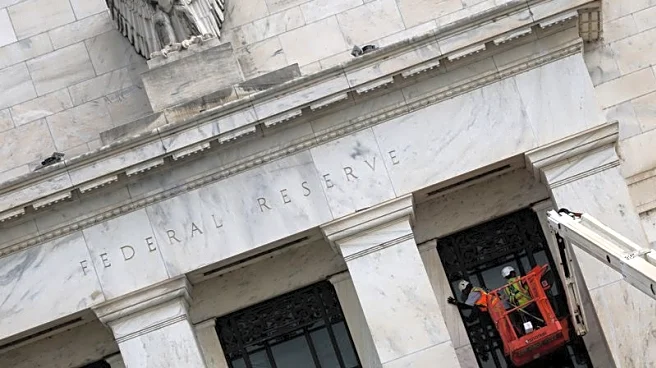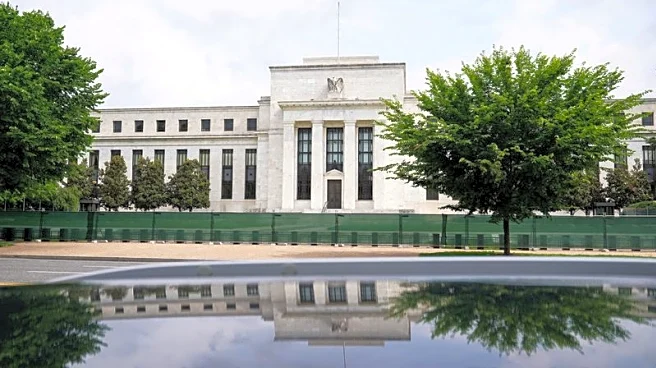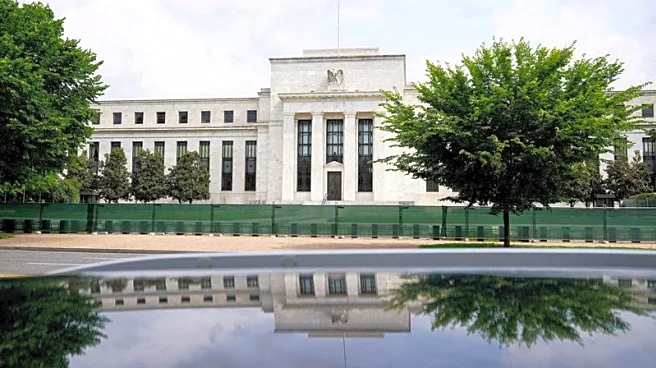What is the story about?
What's Happening?
The U.S. Federal Reserve has cut its benchmark interest rate by a quarter-point to a range of 4.00% to 4.25%, marking the first reduction since December. This decision is part of a broader strategy to support a shaky labor market and stimulate economic activity. The rate cut is expected to benefit interest-rate sensitive sectors, including housing shares, which have already shown signs of improvement. The PHLX Housing index has increased by over 16% this quarter, outperforming the S&P 500's 7% gain. Homebuilder stocks such as DR Horton, KB Home, and Toll Brothers have seen significant gains, alongside home improvement retailers Lowe's and Home Depot. Despite the Fed's move, mortgage rates may not decrease proportionately, as they are more closely tied to the 10-year U.S. Treasury yield, which remains influenced by broader economic factors.
Why It's Important?
The Federal Reserve's decision to cut interest rates is significant for several reasons. It aims to bolster economically sensitive stocks and potentially revitalize the struggling housing sector. Lower interest rates could lead to reduced mortgage rates, making home buying more accessible and stimulating housing market activity. This could have a ripple effect on the broader economy, as increased housing turnover generally boosts economic activity. However, the extent of the rate cuts and their impact on mortgage rates remain uncertain, especially with persistent inflation potentially keeping rates higher. The Fed's actions are closely watched by investors and policymakers, as they navigate economic challenges and seek to maintain stability.
What's Next?
The Federal Reserve has indicated that more rate cuts may follow, depending on economic conditions. Upcoming economic data, including reports on existing and new home sales, will provide further insights into the housing market's health. Additionally, updates on second-quarter GDP, manufacturing and services sector reports, and the personal consumption expenditures price index will be crucial in assessing inflation and economic growth. The Fed's future decisions will likely be influenced by these data points, with potential volatility expected around labor market and inflation figures. Stakeholders will be monitoring these developments closely to gauge the trajectory of interest rates and their broader economic implications.
AI Generated Content
Do you find this article useful?















